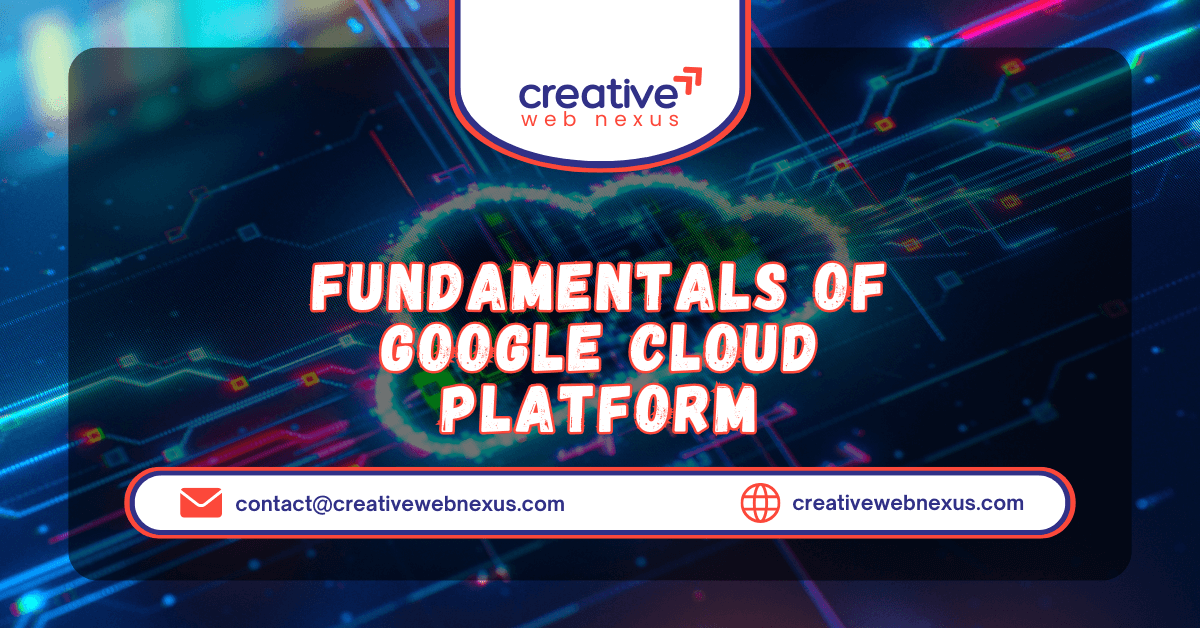Introduction
In the digital world, content optimization plays a key role in improving a website’s performance by ensuring that published content remains fresh, accurate, and relevant. This process helps attract visitors, hold their interest, and enhance traffic while increasing conversions. With constant updates to search engine algorithms, businesses must refine their content to meet evolving requirements.
The Importance of Content Optimization in Modern SEO
Search engines like Google prioritize content that is helpful, valuable, and well-structured. By following the right SEO techniques, businesses can ensure that their pages rank higher, leading to increased visibility, traffic, and revenue. Effective content optimization involves several aspects, including keyword research, internal linking, meta tags, readability, mobile-friendliness, and page speed.
How Google’s Evolving Algorithms Shape Content Strategy
Google frequently updates its algorithms to improve search rankings and filter out low-quality or outdated content. In recent years, updates like Helpful Content Update, BERT, and E-E-A-T (Experience, Expertise, Authoritativeness, Trustworthiness) have influenced how content is evaluated.
To stay ahead, businesses must:
- Focus on high-quality, original content aligned with search intent.
- Implement structured data, internal links, and featured snippets for better visibility.
- Avoid keyword stuffing, duplicate content, and poor site architecture.
Overview of Key SEO Techniques and Guidelines for 2025
As we move into 2025, SEO strategies must evolve to align with new ranking factors. The key techniques to master include:
- On-Page Optimization – Enhancing meta titles, descriptions, headers, images, and content readability.
- Technical SEO – Fixing site speed issues, broken links, duplicate pages, and crawlability problems.
- Keyword Research & Search Intent – Finding low-competition, high-impact keywords and understanding user behavior.
- Content Structuring – Using content clusters and pillar pages for improved topical authority.
- Internal Linking Strategies – Strengthening site architecture with well-placed anchor links.
- SEO Analytics & Reporting – Using tools like Google Analytics, Semrush, and Moz for continuous monitoring.
- AI & Automation – Leveraging AI-driven tools like Surfer SEO for content audits and optimizations.
By integrating these strategies, businesses can create a sustainable and competitive SEO framework that delivers measurable results.
Implementing SEO Content Optimization as a Manager or Director
Managing SEO at a leadership level requires a strategic approach that balances effort, resources, and long-term goals. Whether overseeing a small team or a large organization, SEO managers and directors must ensure that optimization efforts align with business objectives.
Why SEO is a Powerful Growth Channel
SEO is one of the most effective growth channels for businesses because it provides long-term, sustainable results. Unlike paid ads, which require ongoing budget allocation, organic SEO continues to drive traffic and conversions even months or years after content is published.
Comparing SEO vs. Paid Ads
| SEO (Organic) | Paid Ads |
|---|---|
| Long-term growth | Short-term visibility |
| Sustainable traffic | Requires ongoing budget |
| Builds brand credibility | Dependent on ad spend |
| Higher engagement & trust | Can be ignored by users |
A strong SEO strategy helps businesses establish authority, improve rankings, and persuade users to take action. The key lies in creating compelling, high-quality content that supports business goals.
Structuring an Effective SEO Team
Building an effective SEO team is essential for scaling efforts and ensuring that each aspect of content optimization is properly handled. The right team structure includes:
- SEO Manager/Director – Oversees strategy and implementation.
- Content Strategist – Plans and optimizes content based on research.
- SEO Analyst – Monitors rankings, traffic, and competitor analysis.
- Technical SEO Specialist – Fixes site issues, crawlability problems, and page speed.
- Outreach Specialist – Manages link-building and guest blogging campaigns.
Organizations must decide between an in-house vs. outsourced SEO model, depending on their budget, goals, and workload. Additionally, automation tools like Surfer SEO, Semrush, and Google Search Console help streamline content auditing, reporting, and workflow management.
SEO Analytics and Reporting: Measuring Success
Tracking SEO success is vital for improving rankings and ensuring that efforts are driving measurable results. Key metrics to monitor include:
- Organic traffic – Number of visitors coming from search engines.
- Click-Through Rate (CTR) – Percentage of users clicking on a result.
- Bounce Rate – How quickly users leave after visiting a page.
- Conversions – Actions taken, such as purchases, form submissions, or sign-ups.
Popular tools for SEO analysis include:
- Google Analytics – Tracks website traffic and user behavior.
- Google Search Console – Monitors indexing, search queries, and technical errors.
- Semrush & Moz – Provides insights into keyword performance and competitor analysis.
By continuously analyzing data-driven insights, SEO managers can refine strategies, enhance content quality, and improve overall website performance.
Scaling SEO Strategies for Large Teams
For enterprise-level businesses, managing SEO at scale requires a structured approach. Key strategies include:
- Automating keyword research, reporting, and content updates.
- Collaborating across departments (content, tech, and marketing teams).
- Implementing workflow tools for task management and tracking SEO progress.
Using SEO automation tools and AI-driven insights, large teams can efficiently handle content optimization while staying ahead of competitors.
Quick SEO Wins for Fast Results
While SEO is often a long-term strategy, there are several quick wins that can drive immediate improvements:
- Optimizing meta titles, descriptions, and headers.
- Finding low-competition, high-impact keywords for quick rankings.
- Updating outdated content to improve freshness and relevance.
- Improving page speed and mobile-friendliness for better user experience.
Rapid-Fire SEO Fixes to Boost Performance
Sometimes, minor fixes can have a big impact on rankings. These include:
- Enhancing mobile responsiveness for a seamless user experience.
- Fixing broken links, duplicate content, and crawl errors.
- Refreshing and repurposing old content for maximum visibility.
By consistently refining and optimizing content, businesses can continuously improve search rankings and maintain a strong digital presence.
Core Foundations of Content Optimization
Understanding What Google Wants
In 2025, Google’s ranking factors have become more advanced, emphasizing relevance, freshness, and engagement. Businesses must create high-quality, helpful content that aligns with user search intent.
The Latest Ranking Factors for 2025
To optimize content effectively, businesses must understand Google’s ranking algorithms. The key factors influencing search rankings include:
- Content relevance – Does the content provide value based on user queries?
- Freshness and updates – Is the content continuously improved and updated?
- Engagement signals – Do users spend time on the page and interact with the content?
- Technical SEO factors – Is the website fast, mobile-friendly, and error-free?
- E-E-A-T principles – Does the content demonstrate Expertise, Experience, Authority, and Trustworthiness?
How Relevance, Freshness, and Engagement Impact SEO
Google evaluates content relevance using AI-powered algorithms like BERT and RankBrain, ensuring users receive accurate and useful information. Pages with fresh, updated content tend to perform better, and high user engagement (such as longer time spent on a page) signals valuable content.
Businesses must:
✅ Refresh and update old content to maintain relevance.
✅ Enhance user experience by improving page speed and mobile-friendliness.
✅ Structure content effectively to keep users engaged.
E-E-A-T (Expertise, Experience, Authority, Trustworthiness)
Google’s E-E-A-T framework is essential for ranking well in competitive niches like finance, health, and business.
Establishing Authority in Your Niche Through Content
To build a strong online presence, businesses should:
✔️ Publish in-depth, well-researched content that demonstrates expertise.
✔️ Showcase industry experience through case studies, testimonials, and success stories.
✔️ Obtain high-quality backlinks from authoritative websites to boost credibility.
Why E-E-A-T Signals Are Crucial for High Rankings
Google’s Quality Rater Guidelines state that high-ranking content must:
📌 Be written by experts with firsthand experience.
📌 Cite credible sources and external references.
📌 Include real-world insights, data, and well-structured analysis.
By following E-E-A-T principles, businesses can establish a trustworthy brand and improve SEO rankings.
Search Intent: The Key to High-Ranking Content
Understanding search intent is critical to creating content that ranks highly on Google.
How User Intent Shapes Keyword Selection
Every search query has an intent behind it, which falls into four categories:
1️⃣ Informational – Users seeking knowledge (e.g., “What is content optimization?”).
2️⃣ Navigational – Users looking for a specific site (e.g., “Semrush login”).
3️⃣ Transactional – Users intending to purchase (e.g., “Best SEO tools 2025”).
4️⃣ Commercial Investigation – Users comparing options (e.g., “Moz vs. Ahrefs SEO tools”).
Businesses must align content strategy with the right search intent to attract targeted traffic.
Mapping Content Types to Search Intent for Better Engagement
To satisfy user needs, companies should create content that matches different types of search intent:
- Blog posts & guides → Informational queries
- Product pages & comparisons → Commercial investigation
- Landing pages & sales pages → Transactional queries
By understanding how users search, businesses can tailor their SEO strategy for maximum engagement and higher rankings.
Writing for Both Humans and Search Engines
Creating SEO-friendly content requires balancing search engine optimization with readability for humans.
Balancing SEO Best Practices with Readability
To rank well while engaging readers, content should be:
✅ Well-structured – Use short paragraphs, bullet points, and subheadings.
✅ Easy to read – Write in simple, conversational language.
✅ SEO-optimized – Include target keywords naturally without stuffing.
✅ Visually engaging – Add images, infographics, and videos.
How to Structure Content for Maximum Engagement and Search Visibility
To optimize content architecture, businesses should:
📌 Use clear headings (H1, H2, H3) to improve scanning.
📌 Incorporate internal linking to boost site navigation.
📌 Optimize for featured snippets by providing concise answers.
By writing content that is both compelling and optimized, businesses can improve rankings, engagement, and user experience.
Achieving Topical Authority & Coverage
Building topical authority means becoming the go-to resource for a specific topic or industry.
Creating Content Clusters and Pillar Pages
To establish authority, businesses should implement a content clustering strategy:
✔️ Pillar Pages – Comprehensive, in-depth guides covering a broad topic.
✔️ Cluster Content – Supporting articles that cover subtopics in detail.
For example, a pillar page on “SEO Optimization” could have cluster content on:
- Keyword research strategies
- On-page and technical SEO
- Content marketing techniques
By structuring content this way, Google recognizes the site’s expertise, leading to higher rankings.
The Importance of Deep, Well-Researched Content
To rank well, content must:
✅ Be backed by data, research, and case studies.
✅ Provide unique insights instead of generic information.
✅ Answer all user questions to improve engagement and dwell time.
Businesses that focus on depth and quality will gain a competitive edge in SEO rankings.
Beyond On-Page Optimization: Expanding SEO Impact
The Power of Internal Linking
Internal linking plays a crucial role in SEO success, helping with site structure, navigation, and authority distribution.
Linking Strategies to Boost Rankings and Site Structure
To maximize SEO benefits, businesses should:
✔️ Use descriptive anchor text for better context.
✔️ Link to high-priority pages to increase visibility.
✔️ Ensure all internal links are working (fix broken links).
How Internal Links Distribute Authority and Improve User Experience
Internal linking helps:
📌 Search engines crawl pages more efficiently.
📌 Users navigate content easily, improving engagement.
📌 Boost rankings by passing link authority to important pages.
A well-planned internal linking strategy strengthens SEO while enhancing the user journey.
Technical SEO Essentials for Content Success
Technical SEO ensures that a website is easily crawlable, indexed, and optimized for performance.
Fixing Crawlability Issues, Site Speed Problems, and Mobile Errors
To improve technical SEO, businesses must:
✅ Fix broken links, redirects, and duplicate content.
✅ Optimize page speed to ensure fast loading times.
✅ Make the website mobile-friendly for a better user experience.
Why Structured Data and Schema Markup Improve Search Visibility
Using structured data (schema markup) helps Google:
📌 Understand content context more accurately.
📌 Display rich snippets (ratings, FAQs, product details).
📌 Improve CTR and rankings by enhancing search results.
By addressing technical SEO issues, businesses can strengthen their online presence and increase visibility in SERPs.
Automating Content Optimization with Surfer SEO
AI-powered tools like Surfer SEO are transforming the way businesses optimize content. These tools help with keyword research, content audits, and SEO-driven improvements.
How AI-Driven Tools Enhance Content Strategy
By using AI-powered insights, businesses can:
✔️ Analyze top-ranking pages and understand what makes them successful.
✔️ Identify content gaps and areas that need improvement.
✔️ Automate SEO auditing for better efficiency.
Using Surfer SEO for Content Audits, Keyword Insights, and Optimization
Surfer SEO provides real-time optimization recommendations based on Google’s latest ranking factors. It helps businesses:
📌 Audit existing content to identify SEO weaknesses.
📌 Find the best keywords based on competitor research.
📌 Optimize content in real-time using its SEO scoring system.
By incorporating Surfer SEO into their content strategy, businesses can ensure that every article is optimized for success.
Repurposing Content for Maximum Visibility
Creating high-quality content takes time and effort, but repurposing allows businesses to maximize value from a single piece.
Turning Blogs into Videos, Infographics, and Social Media Snippets
Businesses can transform long-form content into multiple formats, including:
✔️ Videos & YouTube tutorials for better engagement.
✔️ Infographics & visual summaries to simplify complex topics.
✔️ Social media snippets & posts to boost reach on different platforms.
How Repurposing Extends Content Lifespan and Boosts Traffic
By reusing content across multiple channels, businesses can:
📌 Increase brand exposure without creating new material.
📌 Attract a wider audience with different content formats.
📌 Improve SEO rankings by keeping content fresh and relevant.
A smart repurposing strategy ensures that content continues to drive traffic and engagement long after it’s first published.
Elevate Your SEO Strategy – Key Takeaways & Next Steps
Recap of Essential Content Optimization Strategies
SEO content optimization is an ongoing process that ensures your website remains fresh, accurate, and relevant to both search engines and users. In 2025, brands must focus on a comprehensive SEO strategy that includes content audits, keyword research, on-page optimization, technical improvements, and continuous updates.
Here’s a quick recap of the most important strategies covered:
✅ Keyword Research & Search Intent – Understand what your audience is searching for and create content that matches their intent.
✅ E.E.A.T. Principles – Establish credibility, expertise, and trust to improve your rankings and brand authority.
✅ On-Page SEO Optimization – Optimize meta titles, descriptions, headings, and images to make content more search-friendly.
✅ Internal Linking & Site Structure – Strengthen your website architecture to enhance crawling, indexing, and user experience.
✅ Content Clusters & Topical Authority – Cover topics in depth by creating pillar pages and supporting content to boost organic rankings.
✅ Technical SEO Fixes – Ensure your website is mobile-friendly, fast-loading, and error-free to improve performance and user engagement.
✅ AI & Automation Tools – Use platforms like Surfer SEO, Semrush, and Moz to refine your SEO efforts and maximize results.
✅ Repurposing & Content Marketing – Extend content lifespan by transforming blogs into videos, infographics, and social media snippets.
By implementing these core strategies, businesses can continuously drive traffic, improve rankings, and achieve long-term success in organic search.
Future Trends and SEO Innovations to Watch in 2025
As Google’s algorithms evolve, keeping up with emerging SEO trends is essential for staying competitive. Here are some key trends shaping the future of content optimization:
1. AI-Powered SEO & Content Generation
- AI-driven tools like ChatGPT, Surfer SEO, and Jasper are revolutionizing content creation by optimizing keywords, structure, and readability.
- Automation will play a bigger role in content auditing, keyword research, and SEO reporting.
2. Enhanced Search Intent & Context Understanding
- Google’s algorithms (such as BERT, RankBrain, and DeepRank) are improving at understanding query intent.
- Optimizing for long-tail keywords, conversational search, and featured snippets will be critical for ranking higher.
3. Zero-Click Searches & Featured Snippets Dominance
- Google is increasingly providing answers directly on SERPs via featured snippets, knowledge panels, and People Also Ask sections.
- To stay visible, brands must optimize content for position zero and focus on FAQ-style content.
4. Voice Search & Conversational SEO
- More users rely on voice assistants like Alexa, Siri, and Google Assistant to search for information.
- Optimizing content for natural language queries and using structured data will improve visibility in voice search results.
5. Video & Visual Content Optimization
- Video content is becoming crucial for SEO rankings, engagement, and brand awareness.
- Implementing video schema markup, transcriptions, and YouTube SEO will enhance search visibility.
6. Core Web Vitals & User Experience Signals
- Google continues to prioritize page speed, interactivity, and visual stability as ranking factors.
- Websites must ensure fast load times, mobile responsiveness, and smooth user navigation to maintain high rankings.
7. The Rise of AI-Powered Search (SGE – Search Generative Experience)
- Google’s AI-driven search (SGE) will change how users discover content.
- Brands must focus on rich, authoritative, and well-structured content to remain competitive.
By staying ahead of these trends, businesses can create an SEO strategy that remains effective in an ever-changing digital landscape.
How to Continuously Adapt to Google’s Evolving Algorithms
Google releases frequent algorithm updates that impact search rankings. To ensure consistent performance, brands should follow these best practices:
1. Regular SEO Audits & Content Refreshes
- Conduct SEO audits to find and fix broken links, outdated content, and crawl errors.
- Update old content with new keywords, statistics, and examples to maintain relevance.
2. Stay Updated with SEO Industry Changes
- Follow trusted SEO resources like Moz, Semrush, Search Engine Journal, and Google’s official blog.
- Attend webinars, conferences, and training programs to keep up with new techniques.
3. Monitor Performance & Adjust Strategies
- Track key SEO metrics (CTR, bounce rate, conversions) using Google Analytics and Google Search Console.
- Continuously refine content strategies based on performance data.
By adapting proactively, businesses can maintain strong rankings and SEO success in the long run.
Frequently Asked Questions (FAQs)
1. What is the most important SEO factor for content optimization in 2025?
The most crucial factor is search intent alignment – creating content that directly answers user queries in a helpful, engaging, and structured way.
2. How often should I update my website content for SEO?
Regular content updates (every 3-6 months) help maintain freshness and relevance, which boosts rankings.
3. Is AI-generated content good for SEO?
Yes, when used correctly. AI tools like Surfer SEO and ChatGPT can enhance keyword research and content structure, but human editing and optimization are essential for quality and trustworthiness.
4. How do I improve my website’s user experience for SEO?
Focus on Core Web Vitals:
- Fast page load speeds
- Mobile-friendly design
- Clear navigation and internal linking
5. What’s the best way to rank in Google’s featured snippets?
Use a concise and structured format:
- Answer the question directly in the first 2-3 sentences.
- Use bullet points, tables, and numbered lists to make information scannable.
6. What are the best SEO tools for content optimization?
Some top tools include:
- Semrush – Keyword research, competitor analysis, and audits.
- Moz – Domain authority tracking and backlink analysis.
- Surfer SEO – AI-powered content optimization.
- Google Search Console – Performance tracking and indexing insights.
Final Thoughts
By implementing the latest SEO techniques, monitoring trends, and continuously refining content, businesses can increase traffic, improve rankings, and drive conversions.
SEO success in 2025 will depend on a data-driven, user-focused approach that aligns with Google’s evolving algorithms.










